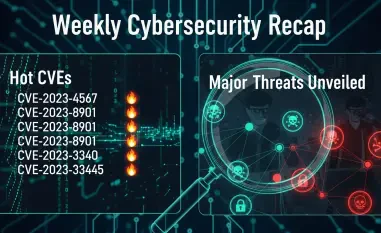As we observe Cyber Awareness Month this October, it’s crucial to dive deep into how the Internet of Things (IoT), Artificial Intelligence (AI), and advanced wireless standards like 5G and new Wi-Fi protocols are reshaping the cybersecurity landscape. The intersection of these evolving technologies presents unique challenges and opportunities, particularly concerning security and business continuity. The rapid adoption of IoT and AI technologies promises unprecedented levels of efficiency, automation, and data insights but also increases the attack surface for cyber threats. As organizations rely more on connected devices and smart technologies, securing these systems becomes paramount to safeguard sensitive data and maintain business continuity.
The Convergence of AI and IoT: Revolution and Risks
The fusion of AI and IoT, or AIoT, is transforming how devices function by enabling real-time autonomous decision-making without dependency on cloud servers. This paradigm shift leads to faster responses, predictive maintenance, and enhanced automation of processes. An AIoT-enabled system, for instance, can anticipate machinery failures and schedule maintenance ahead of time, thereby avoiding costly downtimes. The ability of these systems to operate independently and make intelligent decisions based on vast datasets opens up new avenues for efficiency in various sectors, from industrial manufacturing to healthcare.
However, while AIoT offers remarkable benefits, it also brings forth notable risks. AI algorithms embedded within IoT devices are susceptible to manipulation. Cybercriminals can exploit vulnerabilities in AI models to induce harmful behaviors or decisions from these devices. Imagine the repercussions of compromised AI models in industrial IoT (IIoT)—false sensor readings or operational disruptions could lead to substantial damage. Given the complexity of AIoT devices, security must be meticulously integrated, focusing on hardware, firmware, software, communication protocols, and AI models. For Chief Information Security Officers (CISOs), ensuring AI model integrity and explainability is paramount.
Implementing robust security measures during the early stages of AIoT development can mitigate these risks. Organizations should deploy security protocols that prioritize AI model integrity, which can protect against data poisoning and other forms of cyber manipulation. In addition, building explainable AI models allows for greater transparency and accountability, which can further bolster security efforts. By focusing on these practices, organizations can harness the transformative power of AIoT while mitigating potential security threats, ensuring that innovation does not come at the cost of vulnerability.
Zero-Click Attacks: An Insidious Threat to IoT Networks
Zero-click attacks on IoT environments represent a growing, dangerous cyber threat. Unlike traditional attacks, which necessitate some form of user interaction, zero-click exploits leverage hidden vulnerabilities, attacking IoT devices without any user involvement. These devices often suffer from limited computational power, outdated firmware, and weak security protocols, rendering them prime targets for cybercriminals. As these attacks gain prevalence, the need for heightened security measures becomes increasingly evident.
The deployment scale of IoT devices adds to this vulnerability. Often installed in large numbers with minimal oversight, these devices create a vast attack surface ripe for exploitation. Organizational blind spots typically include underestimating the breadth of the IoT threat landscape and the potential for a single compromised device to serve as an entry point for more extensive breaches. Traditional security frameworks frequently overlook the autonomous operations of IoT devices, leaving them vulnerable to zero-click exploitation.
To counter zero-click attacks, organizations should employ continuous monitoring and regular firmware patching. Network segmentation can isolate breaches and prevent them from spreading, while close collaboration with device manufacturers ensures the application of secure-by-design principles. Traditional security frameworks need to evolve to accommodate the autonomous operations of IoT devices, mandating a more proactive and comprehensive security approach. By addressing these vulnerabilities head-on, organizations can better protect their networks from this insidious type of cyber threat.
5G and IoT Security: Balancing Innovation with Protection
The advent of 5G technology is transformative for IoT, offering faster data transfer rates, lower latency, and the capacity to connect vast numbers of devices simultaneously. This leap is pivotal for powering advanced applications like autonomous vehicles (Internet of Vehicles, IoV), Smart Cities, and remote surgeries. However, these advancements also introduce new attack surfaces that require vigilant security measures. As 5G becomes more ingrained in critical infrastructure, the stakes for ensuring robust security measures rise correspondingly.
One of the significant concerns with 5G is network slicing, which allows different virtual networks to share the same physical infrastructure. A security breach in one network slice could grant unauthorized access to others, making IoT assets vulnerable. Furthermore, 5G’s support for a massive number of IoT connections (mIoT) increases potential entry points for cyber-attacks, where micro-attacks on small devices could aggregate into larger threats against more sensitive systems. These vulnerabilities underscore the need for a comprehensive approach to 5G and IoT security.
To secure the 5G environment, employing slice isolation techniques to prevent unauthorized cross-access is crucial. Additionally, robust authentication and encryption mechanisms are imperative, coupled with a Zero Tolerance policy for IoT device fleets that ensures continuous monitoring and threat mitigation. By implementing these security measures, organizations can leverage the benefits of 5G technology without exposing themselves to unnecessary risks. As 5G continues to evolve, maintaining stringent security protocols will be essential to safeguard connected ecosystems.
New Wi-Fi Standards and IoT Security: The Double-Edged Sword
New Wi-Fi standards like Wi-Fi 6 (802.11ax) and the upcoming Wi-Fi 7 (802.11be) promise substantial improvements in speed, efficiency, and device density for IoT applications. These advancements are essential for supporting Smart Cities, connected healthcare, and other bandwidth-intensive applications. However, the increased efficiency of Wi-Fi 6 also introduces new vulnerabilities that organizations must address. The promise of better connectivity and higher data throughput must be balanced with the need for robust security measures to protect against emerging threats.
For example, the enhanced capability of Wi-Fi 6 to handle multiple devices could inadvertently facilitate Denial of Service (DoS) attacks, where network capacity is overwhelmed by low-level IoT assets. Moreover, the improved traffic management in multi-device mesh networks could become a liability if a single compromised device propagates malicious activities across the network. These potential risks highlight the importance of a proactive and comprehensive approach to Wi-Fi security in the context of IoT.
Organizations need comprehensive strategies to secure Wi-Fi networks, from ensuring secure device onboarding to monitoring traffic at both the device and network levels. Detecting lateral movement or other propagating attacks can prevent compromised devices from wreaking havoc on the broader network. By implementing these security measures, organizations can maximize the benefits of new Wi-Fi standards while mitigating associated risks. Ensuring a robust security posture will be critical to maintaining the integrity of connected systems and safeguarding sensitive data.
Conclusion
As we observe Cyber Awareness Month this October, it’s imperative to explore how the Internet of Things (IoT), Artificial Intelligence (AI), and advanced wireless standards like 5G and new Wi-Fi protocols are transforming the cybersecurity landscape. These evolving technologies intersect to create both unique challenges and opportunities, particularly in the realms of security and business continuity. The rapid adoption of IoT and AI technologies heralds unprecedented levels of efficiency, automation, and data insights. However, it also significantly expands the attack surface for potential cyber threats.
As organizations increasingly depend on connected devices and smart technologies, securing these systems becomes more critical than ever. Protecting sensitive data and ensuring uninterrupted business operations hinge on robust cybersecurity measures. With more devices connecting to networks, the potential for vulnerabilities grows, making it vital for companies to stay ahead of the curve by adopting advanced security protocols and continuous monitoring.
The revolutionary capabilities brought by IoT and AI necessitate a proactive and comprehensive approach to cybersecurity. Businesses must invest in cutting-edge security tools, engage in regular threat assessments, and ensure their workforce is well-trained in cybersecurity best practices. By doing so, they can mitigate risks and leverage the full potential of these advanced technologies while safeguarding their critical data and maintaining business continuity.













